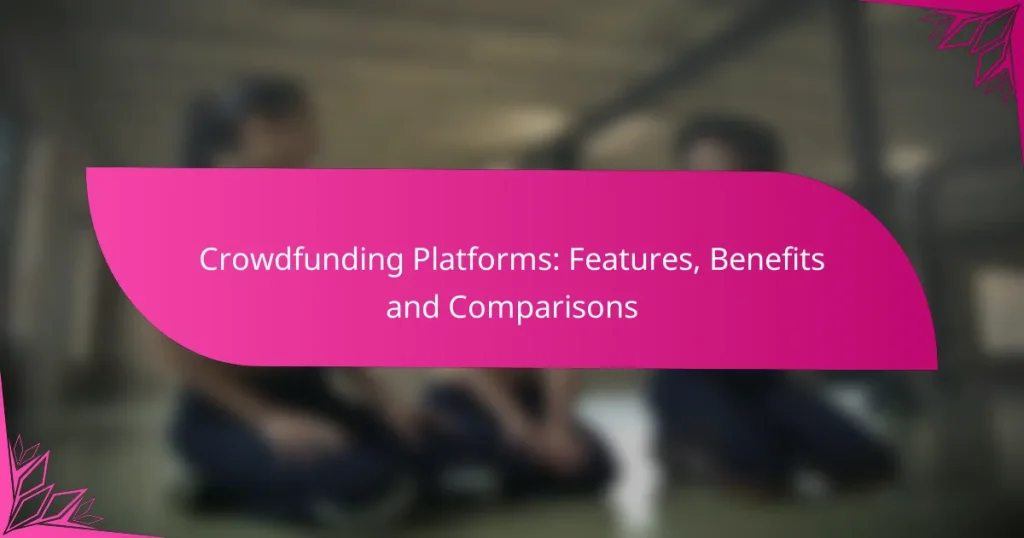Crowdfunding platforms have revolutionized the way startups and projects secure funding by allowing individuals to raise money from a large audience through small contributions. Each platform, such as Kickstarter, Indiegogo, and GoFundMe, offers distinct features and benefits tailored to various project needs, including different funding models and user-friendly interfaces. Understanding the fees associated with these platforms is crucial, as they can affect the total amount received by creators.
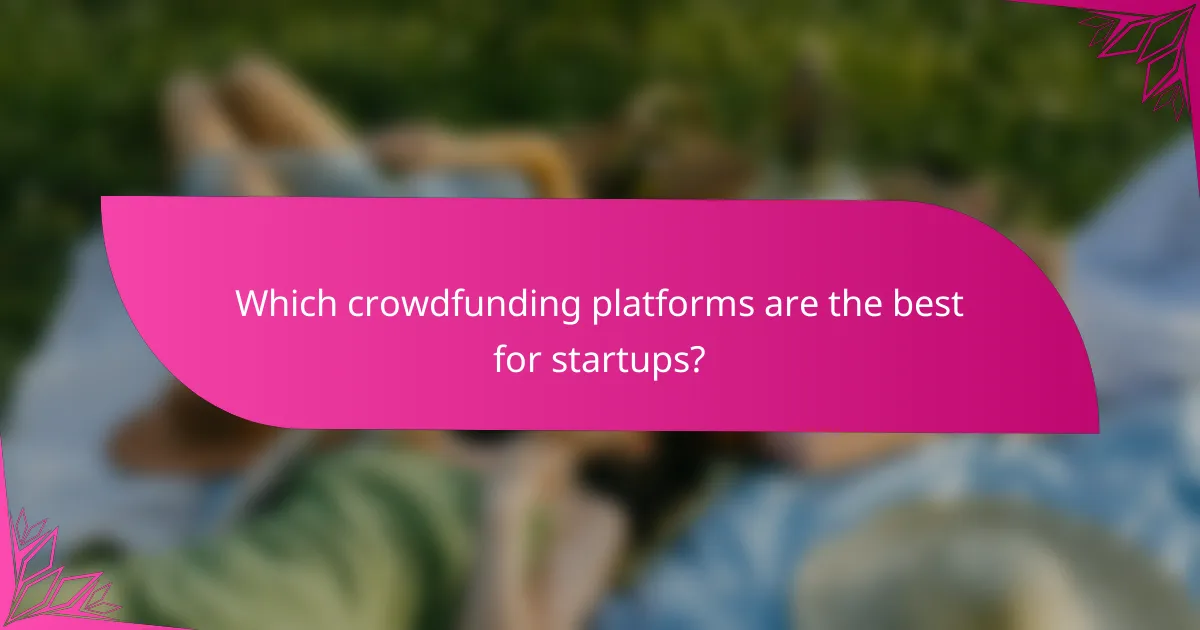
Which crowdfunding platforms are the best for startups?
The best crowdfunding platforms for startups typically include Kickstarter, Indiegogo, SeedInvest, and GoFundMe. Each platform offers unique features and benefits tailored to different types of projects and funding needs.
Kickstarter features and benefits
Kickstarter is a popular platform for creative projects, allowing startups to raise funds through rewards-based crowdfunding. Creators set funding goals and offer backers various rewards based on their contribution levels, which can range from small tokens to exclusive products.
One key benefit of Kickstarter is its large community of backers interested in innovative ideas. Startups can leverage this audience to gain visibility and support. However, projects must reach their funding goal to receive any funds, which adds pressure to meet targets.
Indiegogo advantages for entrepreneurs
Indiegogo offers more flexibility than Kickstarter, allowing entrepreneurs to choose between fixed and flexible funding options. With fixed funding, projects must meet their goal to receive funds, while flexible funding allows creators to keep whatever amount they raise, even if they don’t meet their target.
This platform is ideal for a wide range of projects, including tech innovations and social causes. Indiegogo also provides tools for ongoing fundraising, making it suitable for startups looking to generate continuous support beyond the initial campaign.
SeedInvest for equity crowdfunding
SeedInvest specializes in equity crowdfunding, enabling startups to raise capital by offering equity stakes to investors. This platform is particularly beneficial for businesses seeking significant funding and willing to share ownership with backers.
Investors on SeedInvest can contribute amounts typically starting from a few thousand dollars, making it accessible for both startups and investors. However, startups must comply with regulations set by the SEC, which can involve more complex legal requirements compared to reward-based platforms.
GoFundMe for personal projects
GoFundMe is primarily used for personal fundraising, such as medical expenses or community projects, rather than traditional startup ventures. It allows individuals to create campaigns and share their stories to attract donations from friends, family, and the public.
While GoFundMe does not require a funding goal, it is less suited for startups looking for structured investment. However, it can be a useful tool for entrepreneurs needing to cover initial costs or support community-oriented initiatives.

What are the key features of crowdfunding platforms?
Crowdfunding platforms are online services that facilitate raising funds from a large number of people, typically through small contributions. Key features include various funding models, user-friendly interfaces, and efficient payment processing systems that cater to both project creators and backers.
Funding models: rewards vs. equity
Funding models are crucial in determining how contributors receive value in exchange for their support. In rewards-based crowdfunding, backers receive tangible rewards or perks, such as products or experiences, while in equity crowdfunding, investors gain ownership stakes in the company.
Choosing the right model depends on the project’s nature and goals. For instance, creative projects often thrive on rewards, while startups may benefit more from equity funding to secure larger investments.
User-friendly interface and support
A user-friendly interface is essential for both project creators and backers to navigate the crowdfunding process smoothly. Platforms should offer intuitive design, clear instructions, and accessible resources to help users understand how to create campaigns or contribute effectively.
Support features, such as FAQs, live chat, or customer service, enhance the user experience. Platforms that prioritize user assistance can significantly increase campaign success rates by guiding users through potential challenges.
Payment processing and fees
Efficient payment processing is vital for ensuring that funds are collected and distributed promptly. Most crowdfunding platforms integrate secure payment gateways that accept various payment methods, including credit cards and digital wallets.
Fees can vary widely between platforms, typically ranging from 3% to 10% of the total funds raised. It’s important for project creators to understand these fees upfront, as they can impact the overall funding goal and budget planning.
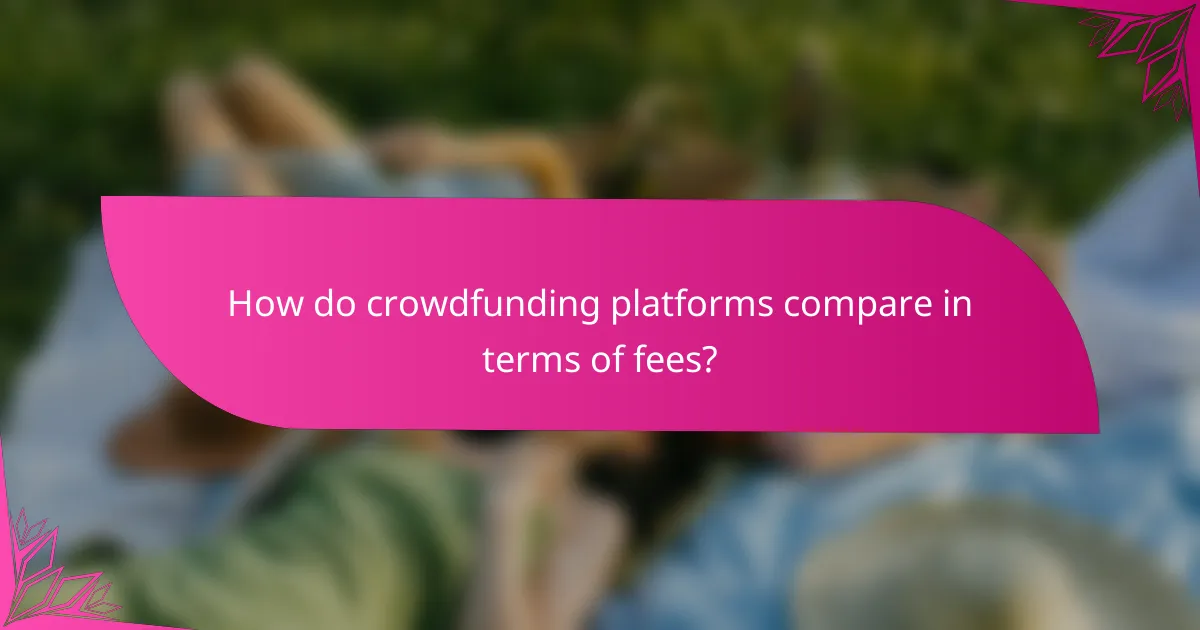
How do crowdfunding platforms compare in terms of fees?
Crowdfunding platforms typically charge fees that can vary significantly based on the type of project and the services offered. Most platforms take a percentage of the total funds raised, along with potential payment processing fees, which can impact the overall amount received by project creators.
Kickstarter fee structure
Kickstarter charges a flat fee of 5% on the total funds raised if the project is successfully funded. Additionally, there are payment processing fees that usually range from 3% to 5%, depending on the payment method used. Creators should factor in these costs when setting their funding goals to ensure they cover all expenses.
For example, if a project raises $10,000, the total fees could be approximately $800, leaving the creator with around $9,200. This means careful planning is essential to meet financial objectives.
Indiegogo fee comparison
Indiegogo offers two funding options: fixed and flexible. For fixed funding, the platform charges a 5% fee on successfully funded projects, while flexible funding projects incur the same fee regardless of whether they reach their goal. Payment processing fees are similar to Kickstarter, typically around 3% to 5%.
Creators should consider the implications of choosing between fixed and flexible funding. For instance, if a project raises $10,000 with flexible funding, the fees would still apply, but the creator retains all funds raised, even if the goal is not met.
SeedInvest costs explained
SeedInvest operates differently, focusing on equity crowdfunding. The platform charges a 7.5% fee on the total funds raised, along with a 5% equity stake in the company. This model is suitable for startups looking to attract investors in exchange for ownership.
It’s crucial for entrepreneurs to understand these costs upfront. For example, if a startup raises $1 million, it would pay $75,000 in fees and give away $50,000 worth of equity, which can significantly affect long-term financial planning.
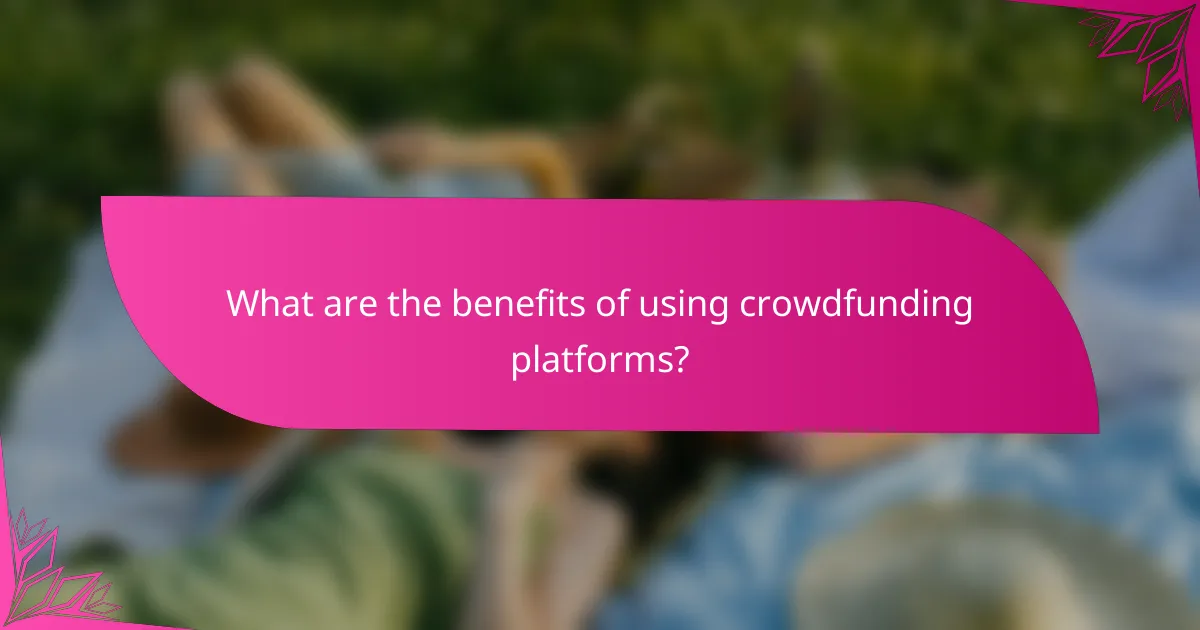
What are the benefits of using crowdfunding platforms?
Crowdfunding platforms offer several advantages, including access to capital, validation of business ideas, and opportunities for marketing and community engagement. These benefits can significantly enhance the chances of success for startups and projects seeking financial support.
Access to a wider audience
Crowdfunding platforms enable creators to reach a global audience, allowing them to attract potential backers from various demographics. This broad exposure increases the likelihood of securing funding compared to traditional financing methods, which often rely on local investors.
By leveraging social media and online marketing, campaigns can go viral, drawing in hundreds or thousands of contributors. For instance, a project that resonates with a niche community can quickly gather support, sometimes raising funds in the low tens of thousands to millions of dollars.
Validation of business ideas
Using crowdfunding can serve as a litmus test for business ideas, allowing entrepreneurs to gauge market interest before fully committing resources. If a campaign successfully meets its funding goal, it indicates a viable product or service that resonates with potential customers.
Conversely, a lack of interest may signal the need to rethink or refine the concept. This feedback loop can save time and money, helping entrepreneurs avoid pursuing unprofitable ventures.
Marketing and community building
Crowdfunding is not just about raising funds; it also serves as a powerful marketing tool. Campaigns create buzz and awareness around a product, often leading to organic growth through word-of-mouth and social sharing.
Additionally, backers often become advocates for the project, fostering a community that can provide ongoing support and feedback. Engaging with this community through updates and interactions can lead to long-term relationships, enhancing customer loyalty and future sales opportunities.
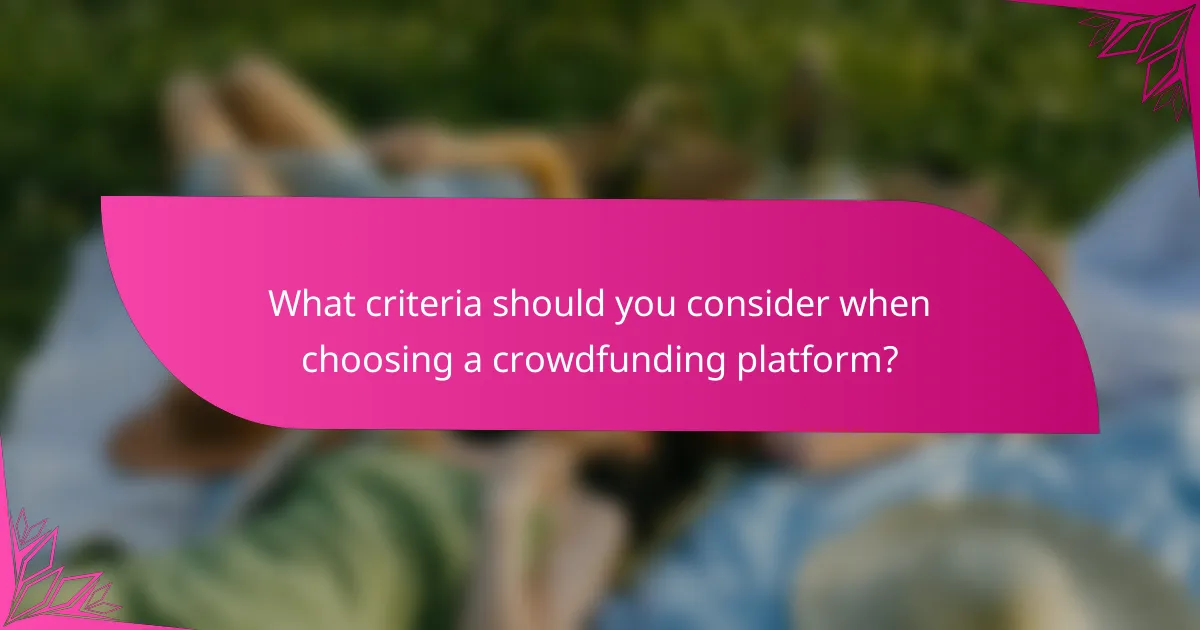
What criteria should you consider when choosing a crowdfunding platform?
When selecting a crowdfunding platform, consider factors such as target audience alignment, project type suitability, and funding goals and timelines. These criteria will help you find a platform that best matches your project’s needs and increases your chances of success.
Target audience alignment
Understanding your target audience is crucial when choosing a crowdfunding platform. Different platforms cater to specific demographics, interests, and project types. For instance, platforms like Kickstarter attract creative projects, while GoFundMe is more focused on personal causes.
Research the user base of each platform to ensure it aligns with your project’s audience. Consider factors such as age, location, and interests to maximize engagement and support.
Project type suitability
Each crowdfunding platform has its strengths in terms of project types. For example, equity crowdfunding platforms like SeedInvest are ideal for startups seeking investment, while reward-based platforms like Indiegogo are better for product launches. Choose a platform that specializes in your project type to leverage its features effectively.
Evaluate the platform’s success stories and featured projects to determine if it has a track record of supporting similar initiatives. This can provide insight into how well your project might perform on that platform.
Funding goals and timelines
Your funding goals and timelines should align with the platform’s structure. Some platforms operate on an all-or-nothing basis, meaning you only receive funds if you meet your goal, while others allow you to keep whatever you raise. Assess which model suits your financial needs best.
Additionally, consider the duration of campaigns on different platforms. Some may allow for longer campaigns, which can be beneficial if you need more time to reach your target. Set realistic goals and timelines based on the platform’s capabilities and your project’s requirements.
